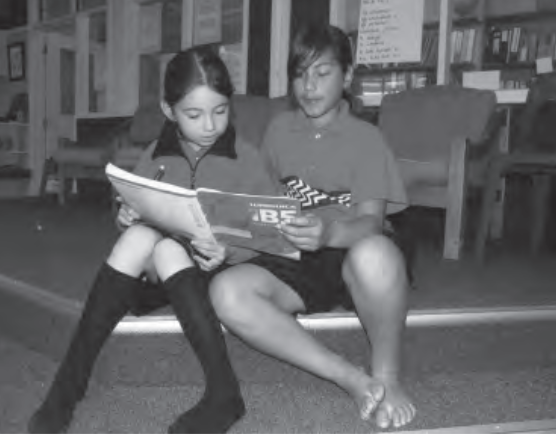I TE TAU TUARUA
TE ARA WHAKAAKO I TE TUHITUHI
Whārangi Ihirangi
Mātua ko te Kōtuitui
Kaiako should explicitly plan to integrate the language strands, whakarongo, kōrero, pānui, tuhituhi, mātakitaki and whakaatu.
Language competency is critical for ākonga to successfully access the curriculum and learning that is relevant to their world.
It is important to make connections across the curriculum between prior knowledge and new knowledge by providing a range of stimulating and engaging experiences.
I te tau tuarua: Te Ara Whakaako i te Tuhituhi
Te whakamāramatanga me ngā āhuatanga
TUHITUHI NGĀTAHI | SHARED WRITING
Tuhituhi Ngātahi is a collaborative writing experience between a kaiako and a group of ākonga. The kaiako takes on the role of scribe, recording the ideas and contributions of the ākonga. This approach allows the kaiako to model being a writer.
Te whakamāramatanga me ngā āhuatanga
TUHITUHI MOTUHAKE | INDEPENDENT WRITING
Tuhituhi Motuhake refers to ākonga generating content on their own. The focus is on fostering a love of writing. The writer also has the opportunity to practice their knowledge, skills and strategies without direct support from the kaiako.
Te whakamāramatanga me ngā āhuatanga
TUHITUHI ARAHANGA | GUIDED WRITING
Tuhituhi Arahanga is an additional instructional approach where a kaiako works with a small group of ākonga who are at a similar writing level or have similar instructional needs. The focus is on the kaiako providing support and guidance in aspects of the writing process such as planning and rehearsing what they intend to write, drafting, revising, editing and publishing as appropriate.
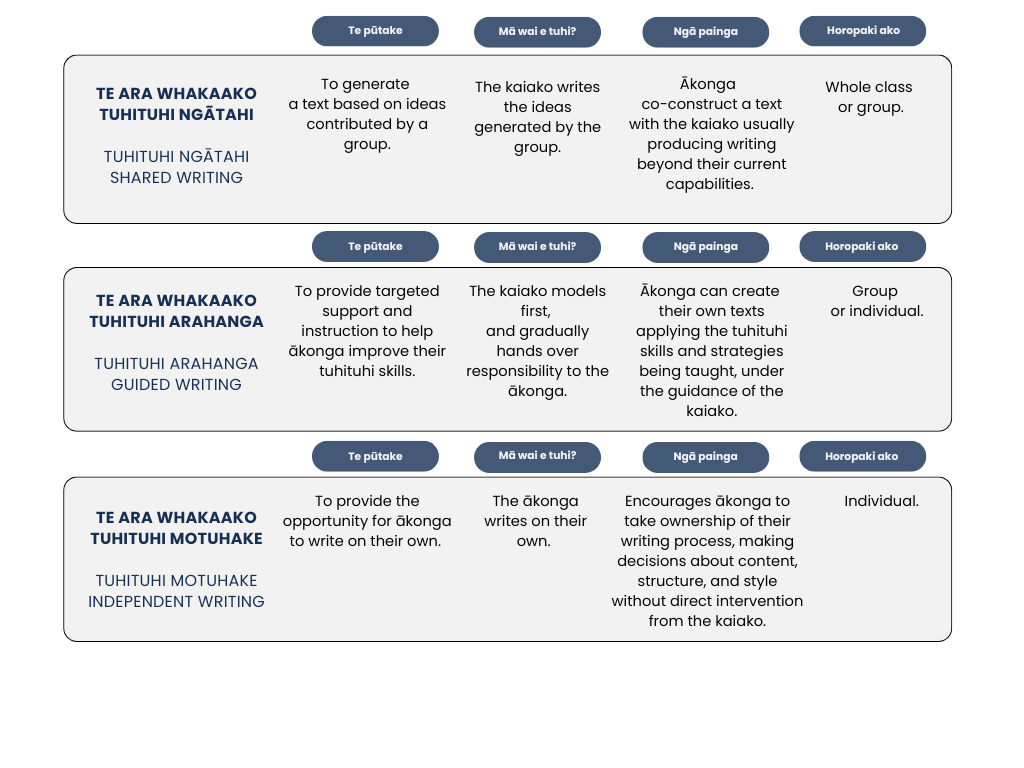
I te tau tuarua: Te Whakahaere i te Tuhituhi Ngātahi
This lesson sequence outlines the steps that the kaiako and ākonga go through during a shared writing session, such as when teaching writing for a specific purpose. Depending on the lesson’s purpose and the individual needs of the ākonga, the kaiako may work with the whole class or with a small group.
In the first two years of kura, ākonga should be exposed to and engaged in shared writing for the following writing purposes:
Writing about personal experiences, thoughts, and feelings.
Creating stories, narratives, and imaginative texts.
Providing information or facts about topics of interest or learning.
Writing to explain or instruct, such as giving directions or procedures.
Writing that reflects on experiences, learning, or personal growth.
Using language to describe people, places, objects, or events vividly.
Writing to explain a natural or man-made phenomenon by answering a research question.
Through these purposes, shared writing helps ākonga develop foundational writing skills, confidence in their abilities, and an understanding of how written language communicates meaning effectively.
Te tukanga tuhituhi ngātahi
Whakarite:
The kaiako and ākonga brainstorm together about what they want to write.
They talk about how to begin their writing and arrange their ideas in order.
Whakatakoto:
The kaiako writes down the words and sentences the ākonga suggests, showing how letters make sounds and form words.
The kaiako demonstrates and models how to write words and sentences correctly, using clear examples.
Whakamārama:
Together, they check what they've written to make sure it makes sense and flows well.
Together they talk about why they picked certain words and how those words help tell their story or message.
Whakatika:
Together, they make their writing better by adding details, fixing mistakes, and ensuring it's easy to read.
The kaiako helps with spelling, grammar, and punctuation to make sure the writing is accurate.
Whakaputa, Tuku Atu Tuku Mai:
After making changes, they write a neat version of their work.
Ākonga share their finished writing with classmates or others, who listen and provide positive feedback and suggestions.
I te tau tuarua: Te Whakahaere i te Tuhituhi Arahanga
During guided writing, modelling and other teaching strategies such as explaining, questioning and giving feedback are used. This is ‘explicit’ teaching, because there is a focus on particular aspects of writing and ākonga are guided on what to do and how to do it. It is therefore important to consider grouping ākonga according to their instructional needs. (Ka Oho Te Manu Ki te Ao Tuhituhi pp 107). Guided writing sessions may vary from 15 to 30 mins depending on the learning objectives or writing skills being developed. Some aspects of writing, such as the following are well suited to the guided writing approach. These are:
Introduction and Purpose Setting:
Kaiako explains the writing task or skill that will be focused on. e.g., word recognition and syllables.
Discuss with ākonga why this skill is important and what the ākonga will learn from practising it.
Guided Practice:
Ākonga practises the new skill with kaiako guidance and support.
Kaiako provides immediate feedback, offering tips and assistance as needed.
Modelling and Demonstration:
Kaiako demonstrates how to use the writing skill or technique, such as forming sentences or adding details to writing.
They think aloud, explaining their thought process as they write.
Independent Practice:
Ākonga then apply the skill independently in their own writing.
Ākonga circulates to provide individualised help and encouragement.
Sharing and Reflecting:
Ākonga share their writing with peers or the class.
Kaiako and classmates provide constructive feedback, praising strengths and suggesting improvements.
Ākonga reflect on what they have learned and how they can use it in future writing.
I te tau tuarua: Tuhinga Māhorahora
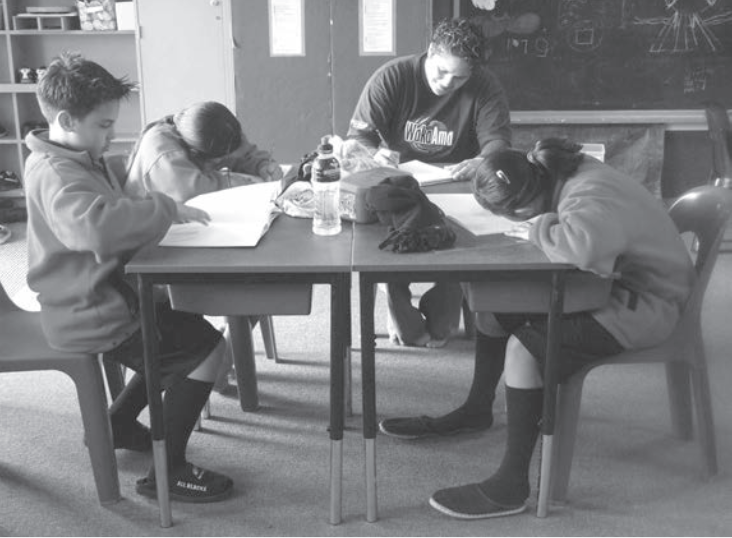
In Tuhinga Māhorahora or Free Writing, ākonga should:
Write everyday about topics of their choosing.
Write about their own experiences and things they might imagine.
Begin to notice, wonder, ask questions and explore new ideas through writing.
Take a chosen piece of tuhinga māhorahora and work on it through the writing process to prepare it for publishing.
I te tau tuarua: Ngā Toi Mokopuna - Tuhituhi
This section outlines the skills, strategies and knowledge required in tuhituhi in the first two years.
I ngā marama e ono
I te tau tuatahi
I ngā marama tekau mā waru ki te tau tuarua
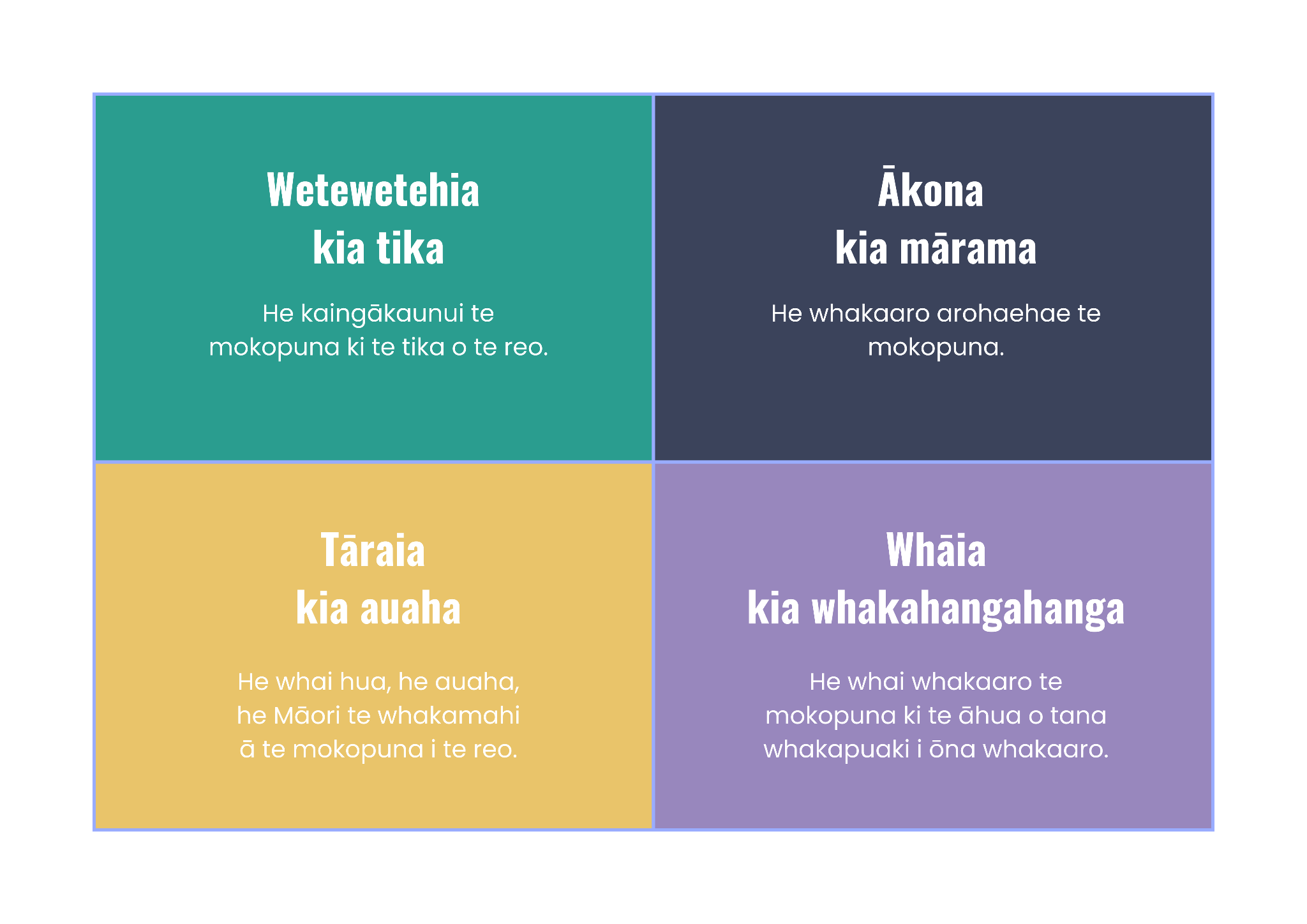
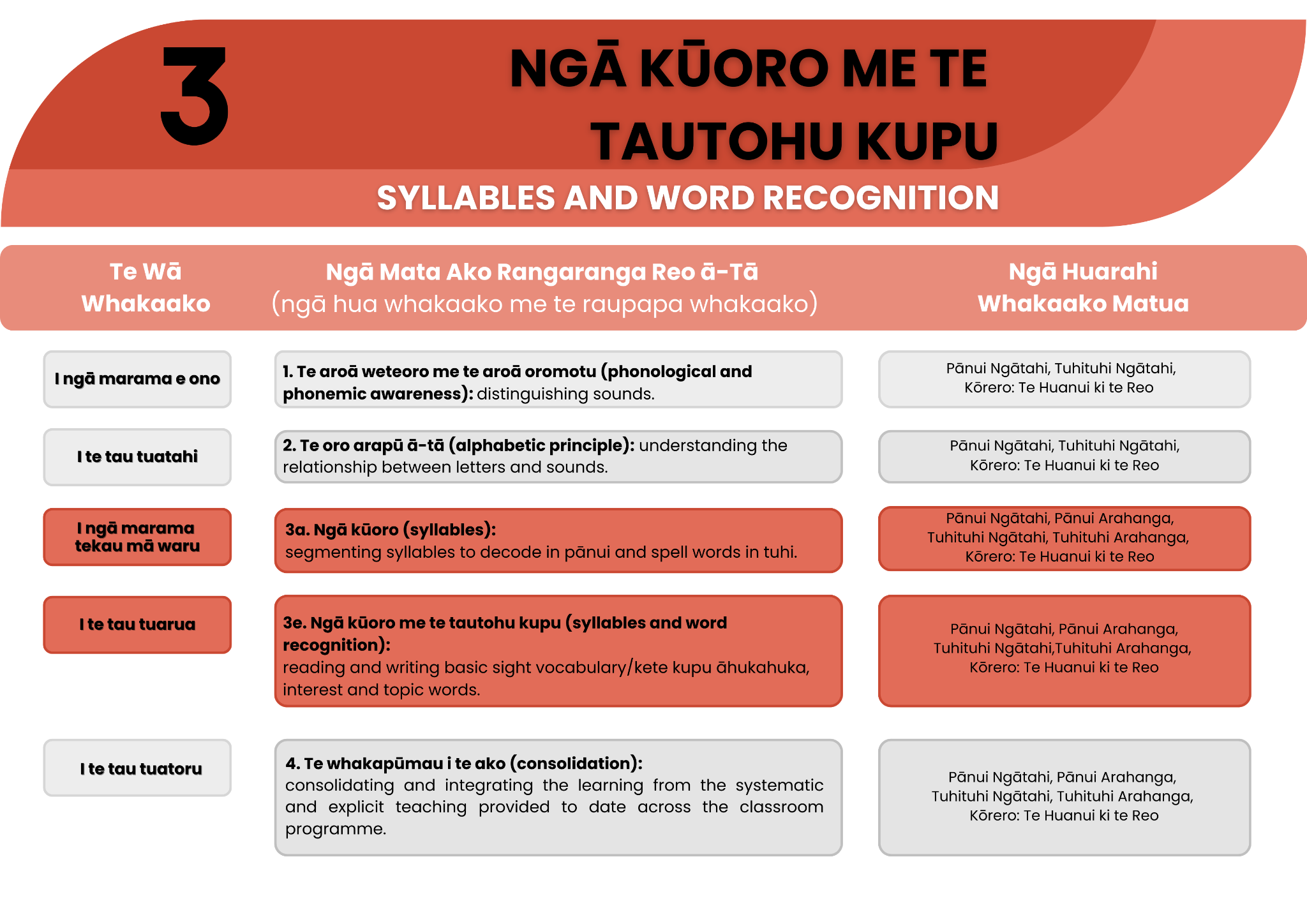
Wetewetehia kia tika
He kaingākaunui te mokopuna ki te tika o te reo.
Te whāinga
Ākonga learning focuses on accurately using and understanding basic vocabulary and sentence structures.
Rangaranga Reo ā-Tā
Ngā Tohu Ako
Te ngako o te whāinga
During a tuhituhi lesson, support the ākonga to:
(Rangaranga Reo ā-Tā: Ngā Kūoro me te Tautohu Kupu) Attempt to spell unfamiliar and multisyllabic words using knowledge of sounds/letters and consonant - vowel sequences (te pākati oro K/P), e.g., ha-ka or ka-ra-ka.
Organise print on the page, including writing on the line, writing from the margin, and leaving spaces at the top and bottom of the page.
Use the macron correctly to represent a long vowel sound in words.
Write simple sentences using correct punctuation.
Use an increasing number of high frequency sight words and words from their own vocabularies in their writing.
Attempt to spell words using the dipthongs and double vowel blends, e.g., tauhou, hiamoe, pou, hui, koa, and hue.
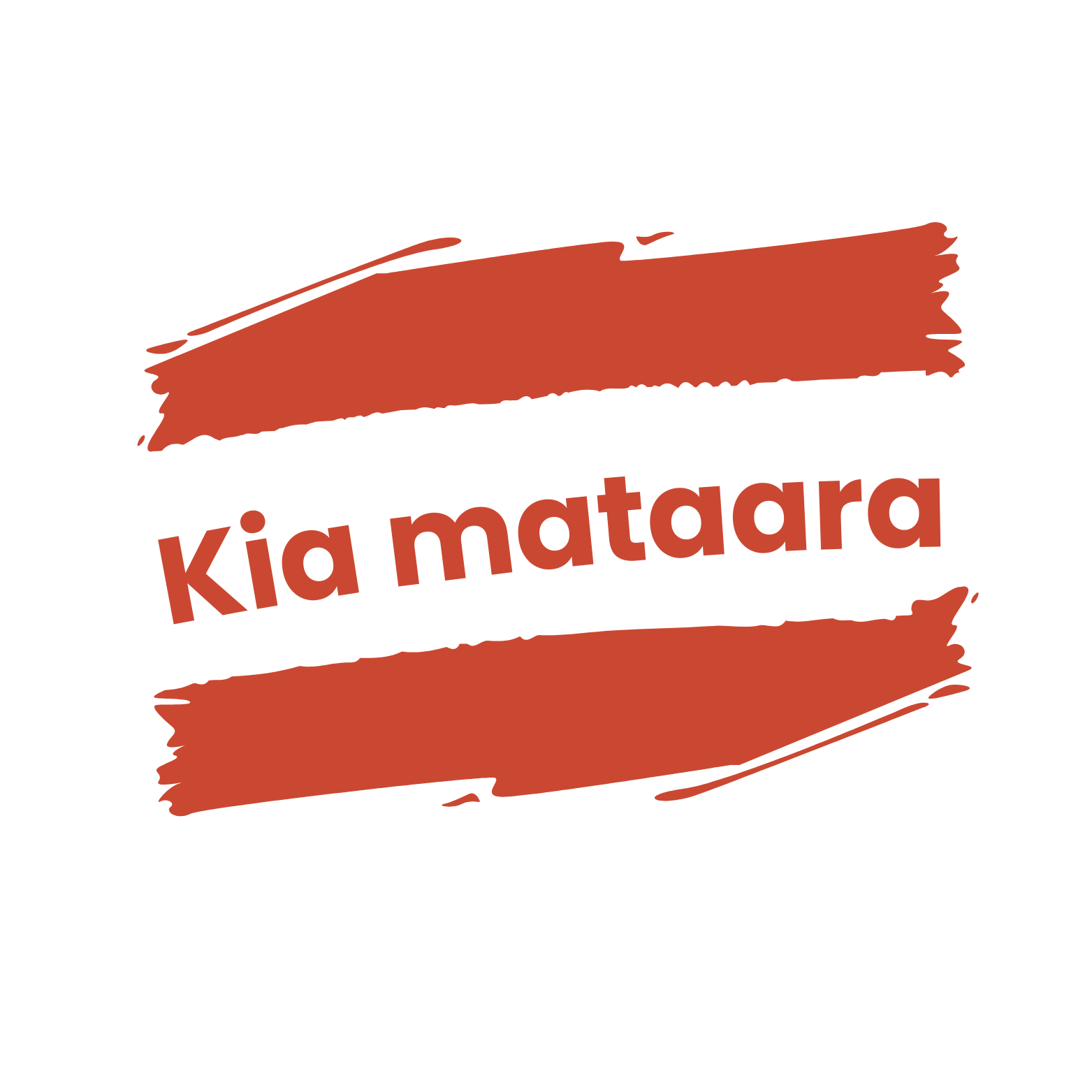
By the end of 18 months at kura, ākonga need to be able to:
listen attentively to others to learn new words, sentence structures, for tuhituhi, correct pronunciation when reading aloud what they have written.
By the end of two years at kura, ākonga need to have a clear understanding of the relationship between sounds and letters. They should be able to:
decode with some accuracy, recognising letters, simple symbols, and building a personal bank of high frequency words.
match most written words to the spoken words when reading.
Ākona kia mārama
He whakaaro arohaehae te mokopuna.
Te whāinga
Ākonga learning focuses on developing basic comprehension skills and strategies.
Ngā Tohu Ako
Te ngako o te whāinga
During a tuhituhi lesson, support the ākonga to:
Organise ideas using brainstorming and basic planning charts.
Use talk or pictures to develop their ideas for writing.
Participate in planning during shared and guided writing sessions.
Re-read their own writing to check that it makes sense.
Participate in pair and group conferences for revision, with support from the kaiako.
Extend ideas generated during a guided writing session write a first draft of text.
Pūtake tuhituhi
Create texts with support for differing purposes
e.g. He Kura Tuhituhi: Personal recounts; He Manu Taketake: Pepeha and whakapapa; announcements; acknowledgements.
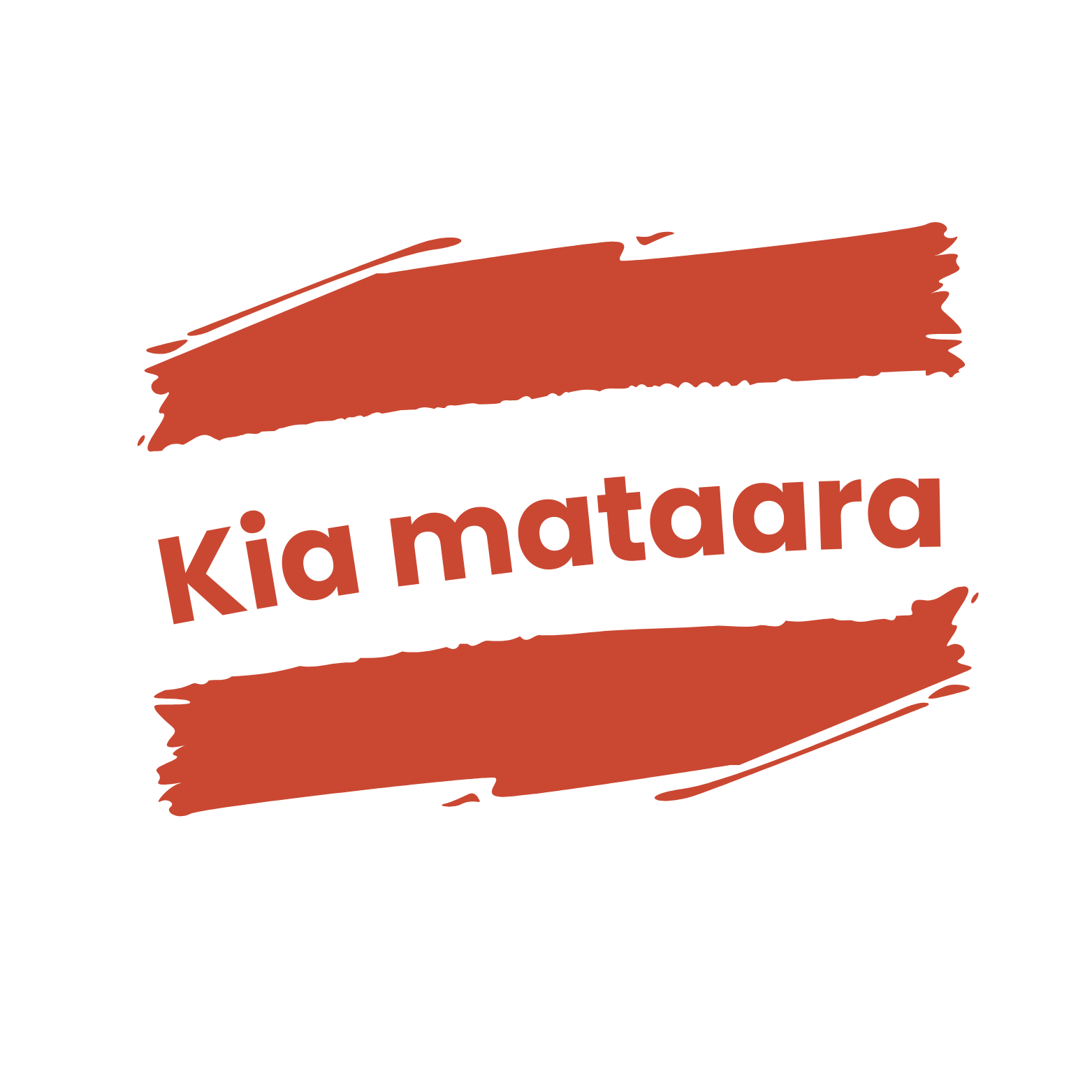
By the end of two years at kura, ākonga need to be able to ask and respond to simple questions.
Whāia kia whakahangahanga
He whai whakaaro te mokopuna ki te āhua o tana whakapuaki i ōna whakaaro.
Te whāinga
Ākonga learning focuses on developing basic interpersonal communication skills.
Ngā Tohu Ako
Te ngako o te whāinga
During a tuhituhi lesson, support the ākonga to:
Share their writing with others and answer questions about it.
Respond to the writing of others, e.g., by telling the writer what they remember and by sharing something that the writing reminds them about.
Take responsibility for some aspects of the publishing process, including decisions about format, layout, illustrations, and whether the text will be typed or handwritten.
Respond to feedback by adding on or deleting detail, with support from the kaiako.
Consider purpose and audience as part of planning for writing during guided writing.
Tuhinga māhorahora
Use existing skills and knowledge to create free texts independently.
Tāraia kia auaha
He whai hua, he auaha, he Māori te whakamahi a te mokopuna i te reo.
Te whāinga
Ākonga learning focuses on discovering ways to express thoughts and imagination.
Ngā Tohu Ako
Te ngako o te whāinga
During a tuhituhi lesson, support the ākonga to:
Use some descriptive words and expressions to convey their thoughts and feelings.
Use their existing skills and knowledge to write independently.
I te tau tuarua: Ngā Tauira Tuhituhi
The following samples of writing by ākonga are arranged in order of skill development from top left to bottom right. Here are examples of what ākonga writing might look like in the first two years.
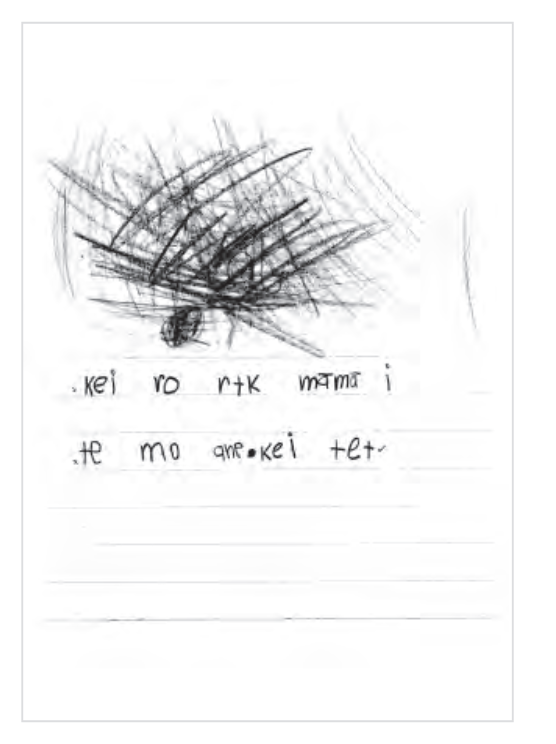
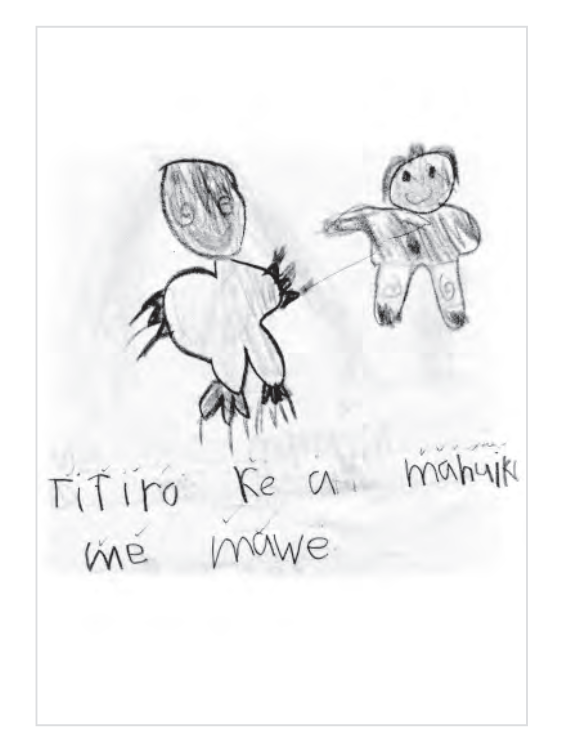
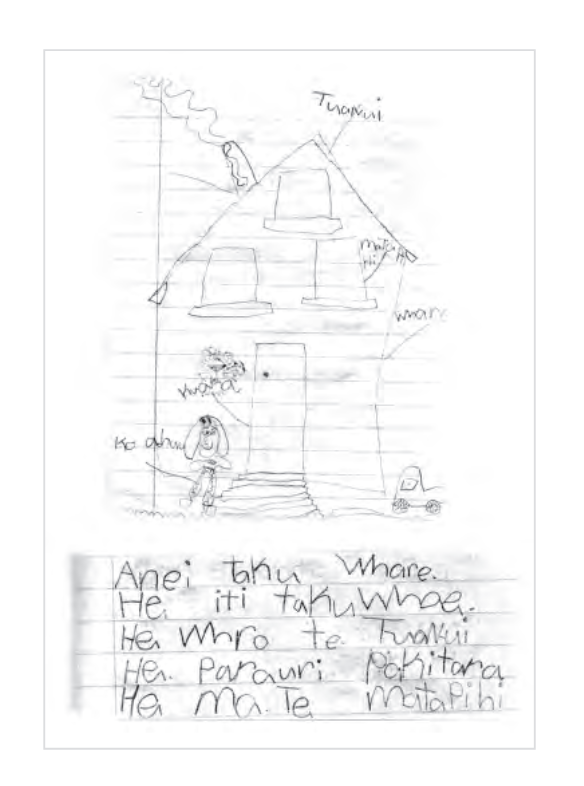
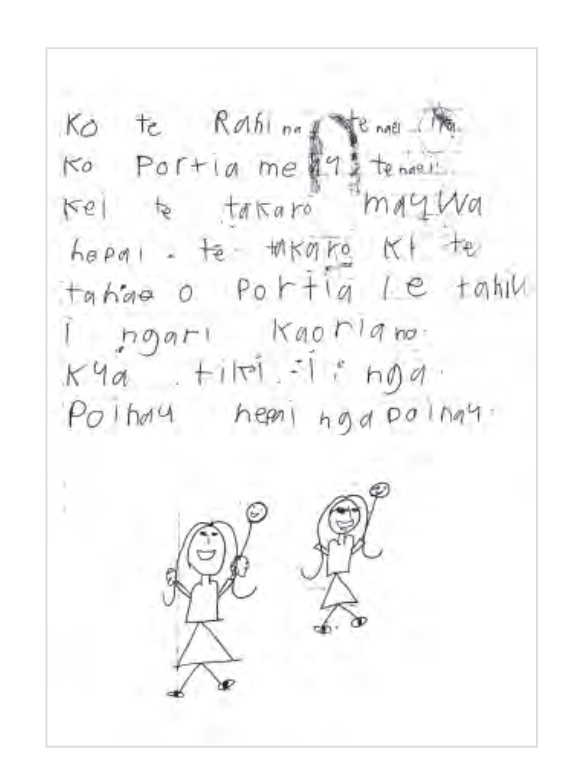
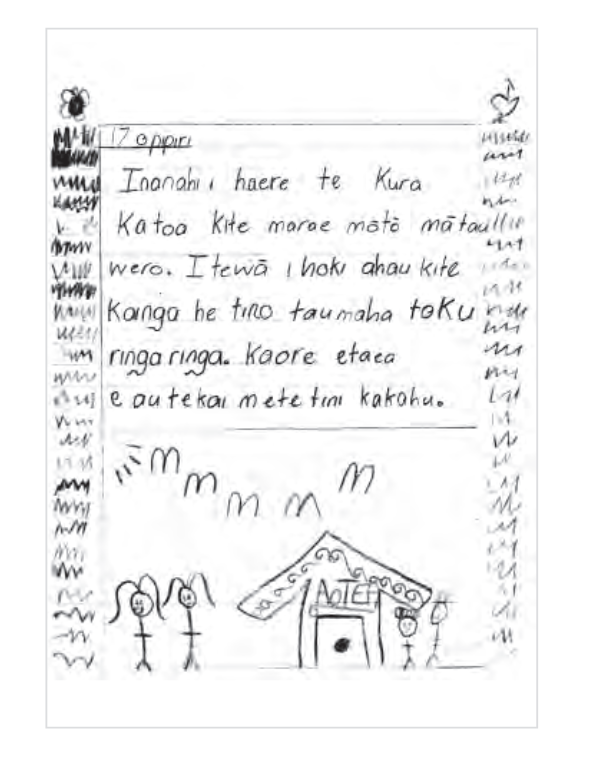
Source: Ka Rere te Manu ki te Ao Tuhituhi p.29, 31
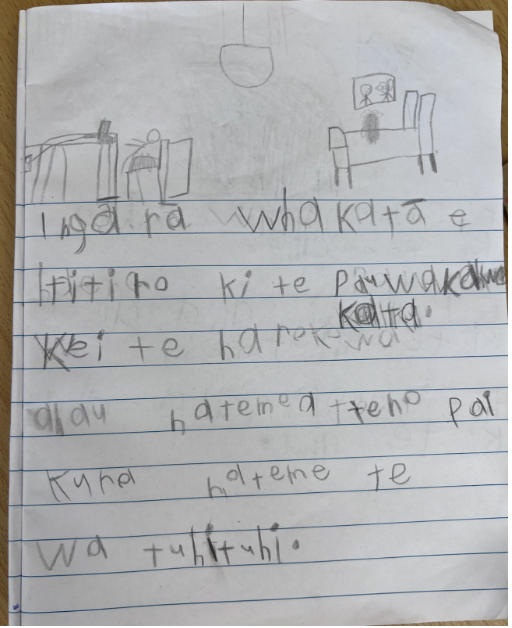
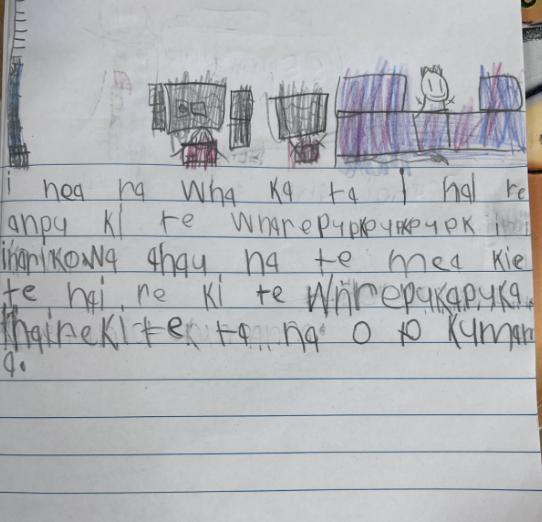
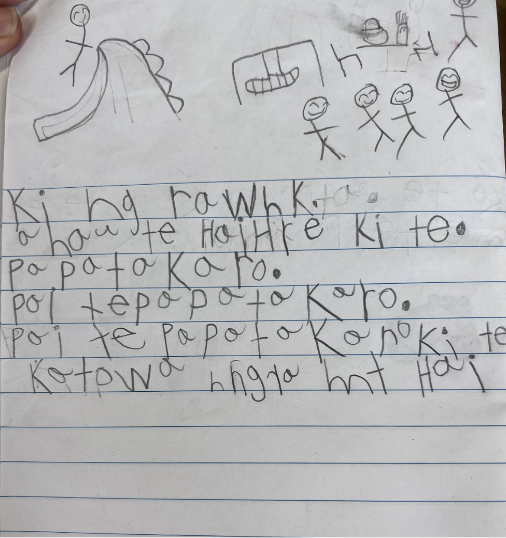
Ref: Tauira Samples: Richmond Road School
I te tau tuarua: Te Aromatawai i te Tuhituhi
Aromatawai ō te ako (of learning), and aromatawai mō te ako (for learning).
Aromatawai should be personalised to reflect the reality that ākonga are at different stages in their learning journey and move through that journey at different speeds. This includes valuing neurodiversity (i.e. that all brains function differently) which is particularly important for neurodivergent ākonga.
Ākonga should be encouraged and supported to understand the purpose of aromatawai and be active participants in gathering information through aromatawai activities such as self-reflection, self assessment and the creation of portfolios of work that demonstrate their learning.
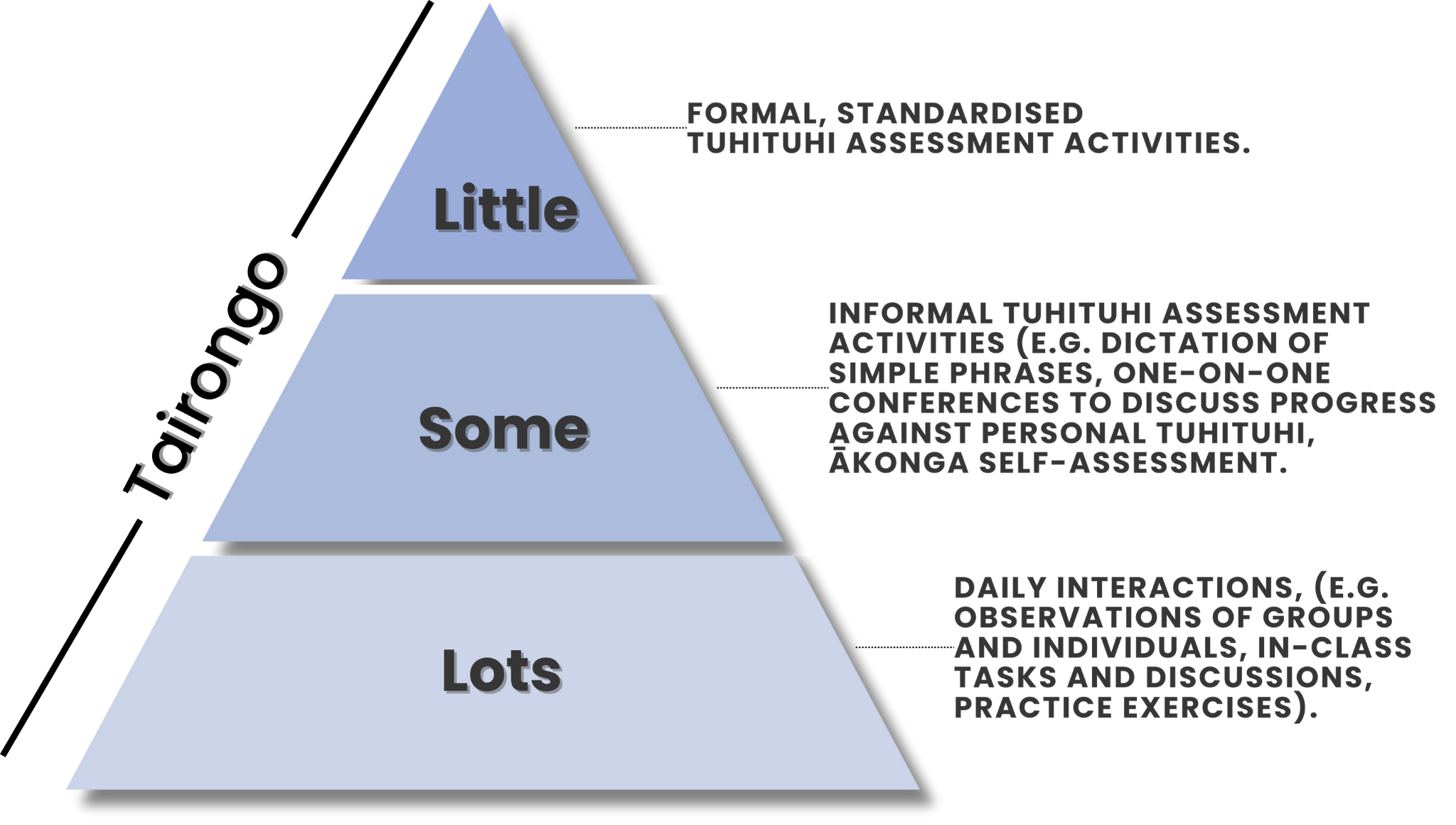
MAHI AROMATAWAI: What to look/listen for, ākonga are:
Using an increasing number of high frequency sight words from the Kete Kupu Āhukahuka, interest words, and topic words accurately in their writing.
Consistently using new and familiar words, new phrases and sentence structures learnt in pānui ngātahi and pānui arahanga in their writing and oral language with greater accuracy in spelling.
Growing confidence to segment words into syllables as they spell them correctly in their writing.
Developing confidence to read aloud and share what they have written with others.
Beginning to engage in discussions about their own writing and the writing of others, providing thoughtful feedback and connections.
Able to respond appropriately to feedback from others by adding or deleting details in their writing, with support of the kaiako.
I te tau tuarua: He Huarahi Tuhituhi Anō
Tuhi atu, tuhi mai | Writing to:
Involves a kaiako or more skilled writer periodically crafting a written response to content a ākonga has produced.
The focus is on making a connection with the ākonga as a writer.
Tuhi tautokotahi | Writing with:
Involves everyone in the class (including the kaiako) writing during scheduled whole class 'free writing' sessions.
The focus is for everyone to write to meet their own personal needs.
Tuhi motuhake | Independent writing:
Refers to ākonga generating content on their own.
The focus is on fostering a love of writing. The writer also has the opportunity to practice their knowledge, skill and strategies without direct support from the kaiako.
